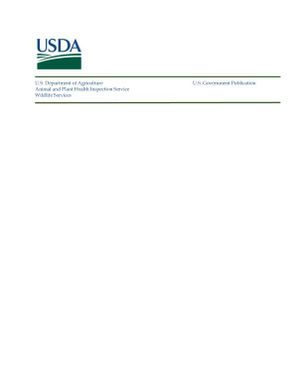Biology and Impacts of Pacific Island Invasive Species. 15.Psittacula krameri, the Rose-Ringed Parakeet (Psittaciformes: Psittacidae)
- Description:
- The rose-ringed parakeet (RRP), Psittacula krameri, has become established in at least four Pacific Island countries (Hong Kong China, Japan, New Zealand, U.S.A.), including the Hawaiian islands of Kauai, Oahu, and Hawaii. Most Pacific islands are at risk of RRP colonization. This species was first introduced to Hong Kong in 1903 and Hawaii in the 1930s1960s, established since 1969 in Japan, and in New Zealand since 2005 where it has repeatedly established after organized removals. The founding birds were imported cage-birds from the pet trade. In native India, RRP are generally found associated with human habitation and are considered a severe agricultural pest. In the Hawaiian Islands, RRP are increasing and expanding their geographic ranges below 500m elevation. Population estimates in 2018 on Kauai were ?6,800 birds, which was a three-fold increase and a 22.5% annual growth rate in the prior 6 years, whereas Oahu had ?4,560 birds with a 21% annual growth rate the prior 9 years; these rates suggest a population doubling time of ?3.5 years. Wild RRP can live 14+ years, can reproduce after 1.5 years, and have few effective predators. Breeding pairs produce 13 fledglings annually. RRP are seed predators and rarely seed dispersers; their flock-foraging behavior can result in severe damage to orchard and field agricultural crops including tropical fruit and corn (Zea mays), and such economic damages are especially pronounced on Kauai. Island societies should prevent new introductions and consider RRP deterrents and population control methods to protect resources.
- Display date:
- 2019
- Collections:
- Secretariat of the Pacific Regional Environment Programme (SPREP)
- Publisher:
- National Wildlife Research Center
- Content partner:
- Secretariat of the Pacific Regional Environment Programme (SPREP)
- Availability:
- Not specified
-
Copyright status: All rights reservedFind out more about what you are able to do with this itemThis item is all rights reserved, with means you'll have to get permission from Secretariat of the Pacific Regional Environment Programme (SPREP) before using it. For more information, please see our use and reuse page.What can I do with this item?Non-infringing useNZ copyright law does not prevent every use of a copyright work, and this item may be hosted by an international institute or organisation. You should consider what you can and cannot do with a copyright work.No sharingYou may not copy and/or share this item with others without further permission. This includes posting it on your blog, using it in a presentation, or any other public use.No modifyingYou are not allowed to adapt or remix this item into any other works.No commercial useYou may not use this item commercially.
Related items
Welcome and warm Pasifik greetings
The information on this site has been gathered from our content partners.
The names, terms, and labels that we present on the site may contain images or voices of deceased persons and may also reflect the bias, norms, and perspective of the period of time in which they were created. We accept that these may not be appropriate today.
If you have any concerns or questions about an item, please contact us.
